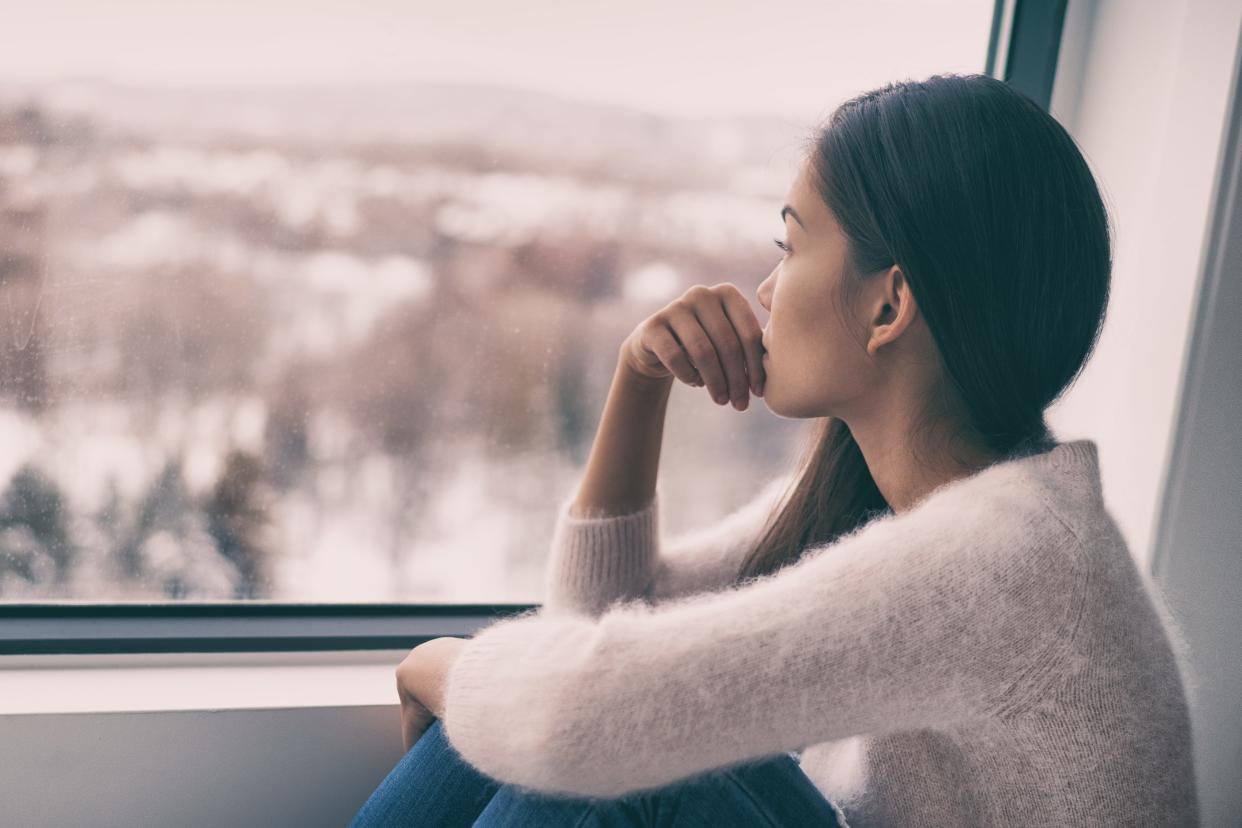Seasonal Affective Disorder hitting Ohioans heavily so far this winter

- Oops!Something went wrong.Please try again later.
Ohioans are ranked as having some of the worst mental health days in the country, and that's a trend doctors warn may continue for several more weeks.
Residents of the Buckeye State fall victim every winter to Seasonal Affective Disorder, according to Dr. Gary Grosel, chief medical officer for UnitedHealthcare of Ohio.
"It's a type of depression," Grosel explained to the USA TODAY NETWORK Ohio. "It's triggered by the change in the seasons and usually begins in late fall and it affects about 3% to 5% of people."
Many people often refer to themselves as having "winter blues," but doctors now say that might not be a complete description.
"Seasonal Affective Disorder takes that a step further," Grosel said. "It starts to interrupt your daily life, including, really, how you think and feel."
'You lose interest in a lot of things'
The disorder takes hold every autumn, not so much from the change in temperature, but the lack of sunlight.
"Waking up and it's dark, going to sleep and it's dark" Grosel said. "It kind of affects a lot of different things that go on in your body's circadian rhythm."
Serotonin production slows and melatonin floods the brain. People tend to sleep more, they cannot concentrate, and patients often report feeling hopeless.

"You lose interest in a lot of things that you normally would enjoy," Grosel said. "You're more sluggish. And then there's this hibernation effect."
The human mind begins craving carbohydrates in an effort to alter neurotransmitters, which leads to overeating, weight gain and even more sluggishness.
Ohio ranked high for poor mental health
Ohioans this year have searched "seasonal depression" online more than those who live in any other state, according to a mental health study recently completed by CertaPet, a telehealth platform that connects people with licensed therapists to see if they qualify for an emotional support animal.
CertaPet research ranked residents of Ohio second among those of all U.S. states for susceptibility to seasonal depression — Alaskans ranked first.
The study also determined that people who live in the Buckeye State experience an average of 4.8 "poor mental health days" every month, eighth of all states. The worst was West Virginia with 5.8 days and the best was South Dakota at 3.3 days.
Younger adults most susceptible to seasonal depression
Doctors have noticed that Seasonal Affective Disorder only targets people for about a dozen years.
"The age range of 18 to 30," Grosel said. "So, that younger adult range."
The average American who reaches theirs 40s becomes less susceptible to the disorder, and by the age of 60 it is almost nonexistent. Experience and wisdom seem to play a large part in that trend.
"We have lived through so many winters that we start to anticipate what's going on and we kind of prepare for that," Grosel said. "Another big part of the treatment process is just being aware aware that it's usually going to happen."
The doctor said that women tend to report symptoms of Seasonal Affective Disorder more frequently than men.
Treatments available for Seasonal Affective Disorder
Awareness and self-identification are the best tools Ohioans have in protecting themselves against Seasonal Affective Disorder.
The doctor said adults should ask themselves if they are still enjoying tasks they once loved, and, if not, how long has that interest been gone.
"Once you can self identify, then you could seek out some things to help you," Grosel said. "That's when you can call and try to get help."
A family doctor may recommend cognitive behavioral therapy, which studies show has a long-lasting effect on patients.
"Also, light therapy," Grosel said.
Light therapy is a trend that's gained popularity over the years, with mixed results. The lights are typically about 20 times brighter than an average indoor light and are designed to block ultraviolet rays from being emitted.
"A lot of people will use that in the mornings," Grosel said. "And it does tend to help, you know, especially when people are waking up and it's dark outside."
There are medications available that doctors can prescribe to some patients to help their bodies better regulate the supply of serotonin and melatonin in their bodies.
"We also talk a little bit about Vitamin D deficiency," Grosel said. "That happens with lack of sunlight, so adding some Vitamin D may help boost the serotonin a little bit as well."
One of the best remedies to Seasonal Affective Disorder is an age-old tactic of bundling up and going outside into the fresh air for a walk or some other form of exercise.
Some people may be more likely to drink alcohol during the winter, which actually tends to worsen depression.
"Alcohol and drugs are obviously not the answer," Grosel said. "That just kind of builds into more of the depression and then you're in this bad spiral from that point on."
The doctor said anyone who needs to talk to someone about depression is encouraged to call 866-342-6892 any time of the day, every day of the year.
"You can remain anonymous, if that's how you feel," Grosel said. "There are licensed health professionals that are there. They can help you further."
ztuggle@gannett.com
419-564-3508
Twitter: @zachtuggle
This article originally appeared on Mansfield News Journal: Seasonal Affective Disorder hitting Ohioans heavily so far this winter

